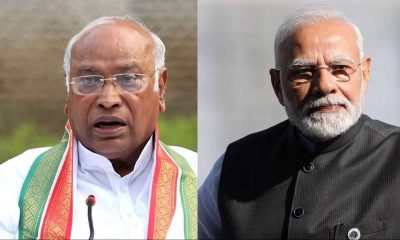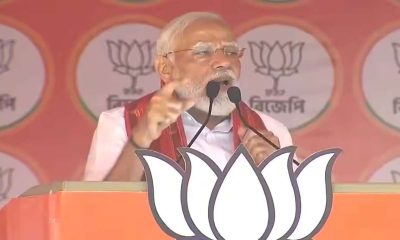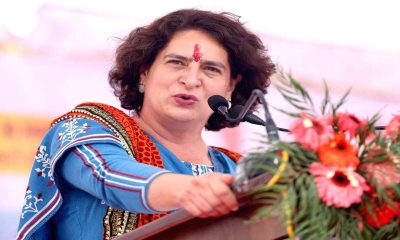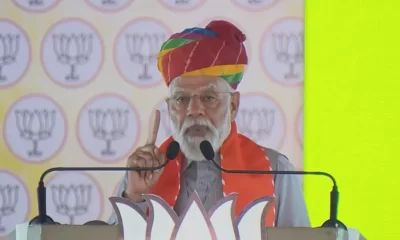India News
The Role Of The Cold War In Indira Gandhi’s Emergency
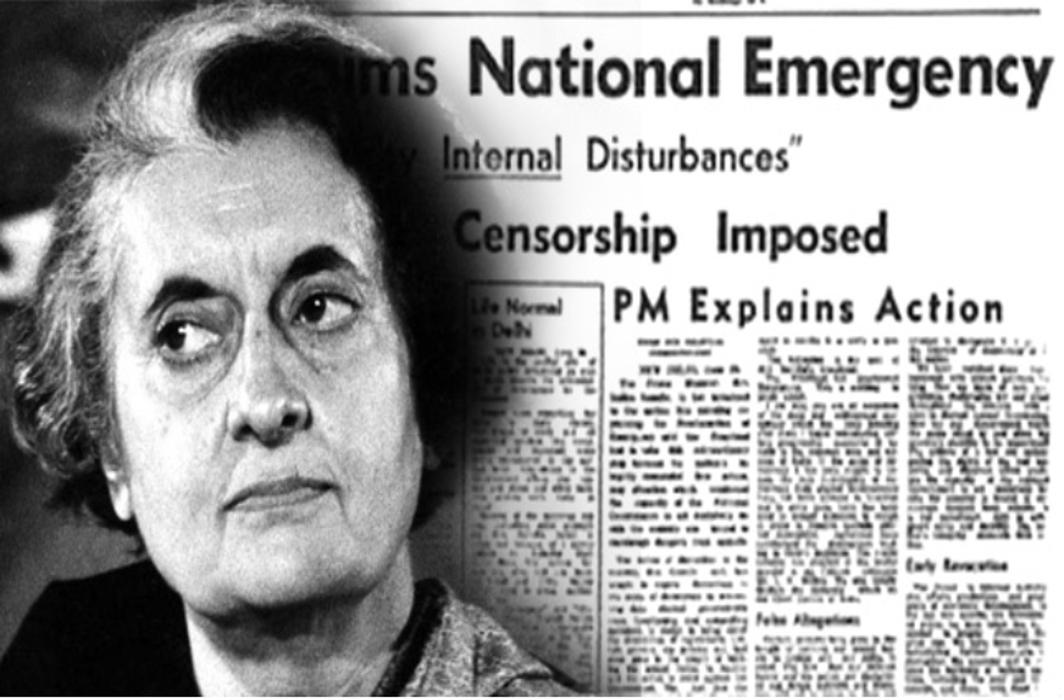
~By Saeed Naqvi
Indira Gandhi declared the emergency in 1975, plonk in the middle of the most intense phase of the cold war. Détente was going so badly for the Americans that stand up comedians in Washington were comparing it to a wife swapping party “from where you return alone.”
After the Vietnam debacle, Washington was going to exert every muscle not to allow Moscow to build upon the strategic asset it had created for itself in New Delhi during the 1971 Bangladesh war.
In fact, the Congress split of 1969 was itself an advantage for Moscow. Mrs. Gandhi had discarded the conservative, pro capital big wigs, more comfortable with Congress stalwarts like Morarji Desai whom she had defeated in the Parliamentary party contest to become Prime Minister in 1966.
Not only was a former card carrying communist (from Eton and Oxford too), Mohan Kumaramangalam part author of the split, he had worked out an arrangement with the General Secretary of the CPI, S.A. Dange described as a policy of “Unite and Struggle”. We shall, said Dange, unite with the Congress’s progressive policies but “struggle” against its “anti people” deviations.
This was a pronounced leftward lurch and it was going to be resisted by a coalition of the Right, both internal and external. Indeed, as early as 1967, within a year of her coming to power, Mrs. Gandhi was given notice: she lost elections in eight states to parties of the opposition. This groundswell would obviously suit the purposes of the Congress old guard discarded by Mrs. Gandhi.
The most succinct observation on Mrs. Gandhi’s ideological leanings came from the correspondent of the Times London, Peter Hazelhurst: “She is a little to the Left of self interest.”
Her ideological inconsistency becomes apparent if one reverts to her earliest days in 1959 as President of the Congress. She dismissed the world’s first communist government which had come to power through the ballot box in Kerala. That she took American help to unsettle Kerala to justify the state government’s dismissal was revealed by US ambassador, Ellsworth Bunker in an oral interview kept in the Columbia University archives. Whatever doubts there might have been about the Bunker revelations, were cleared later by Ambassador Daniel Patrick Moynihan in his memoirs.
During her Prime Ministership in 1976, the Congress party raised a storm against the US having installed a nuclear device on Nanda Devi peak to spy on China. The controversy had many twists. A joint CIA and Intelligence Bureau effort to install the device in 1965 (Lal Bahadur Shastri was Prime Minister then) had failed because of bad weather. Worse, two plutonium laden capsules had been lost. According to the Intelligence estimates the plutonium was enough for half a Hiroshima bomb.
Read More: Indira Gandhi changed democracy into dictatorship: Arun Jaitley
In the course of an interview, Chester Bowles, US ambassador during Indira Gandhi’s first innings, took my breath away. He couldn’t understand Congress protest. “After all Indira had asked me to complete in 1966 the project which had been aborted in 1965.”
Well, this is how the Congress’s attitude towards the super powers varied from time to time. But for the West the spectacle of Mrs. Gandhi and Dange in a warm embrace was alarming because of the context. The West had taken a series of knocks – Vietnam, Angola, Mozambique, Ethiopia, Nicaragua were all communist. Additionally Communist leaders Enrico Berlinguer, Georges Marchais, Santiago Carrillo in Italy, France and Spain respectively were a headache for the West. Given this state of play, India was too priceless a trophy to be easily lost to Moscow’s sphere of influence.
The obstacle in the way of a counteroffensive was Mrs. Gandhi’s personality. She had evolved into a charismatic and, therefore, invincible leader. Proprietor of the Indian Express, Ramnath Goenka and Nanaji Deshmukh, fell into deep thought.
The Indian mind reveres renunciation. It occurred to the head hunters that once a top ranking Socialist leader, Jayaprakash Narayan had renounced political power. He was keeping himself busy with Gandhiji’s ashrams and such unlikely causes as Acharya Vinoba Bhave’s Bhoodan or Land Gift movement. JP agreed to lead the movement provided it remained peaceful.
The youth were in agitation across the globe against the excesses of the Vietnam War – Grosvenor Square, London, barricades in Paris, police shooting down of students at the Kent state university in Ohio, US. Soon thereafter the Navnirman Andolan, youth agitation in Gujarat erupted on a seemingly flimsy issue of hostel fees. After visiting Gujarat, JP was prevailed upon to launch a similar movement against corruption and bad governance in Bihar. It was a tepid agenda livened up only by the media dedicated to the task of keeping up the pressure on New Delhi, boosting notions of a “total revolution” one day, asking police and the bureaucracy not to obey “bad” orders another, and so on. The immediate target of the “movement” was a hapless Chief Minister, Abdul Ghafoor, quite bewildered by his own eminence. Why was he in the eye of a storm? He had sunken cheeks and a drooping frame, draped in a much worn Sherwani. By way of hospitality for visiting scribes, he would fetch a bottle of old smuggler Scotch whisky from his wardrobe full of smudged clothes which were clearly waiting for laundry. He was a simple man, not a plausible enough crook to invite a national movement for his ouster.
JP, who had invited me to stay in his house in Patna’s Kadam Kuan, listened to my stories even about the CM with a kindly smile. He was a trusting man and totally non judgemental about the wide range of political interests who had clambered onto his movement.
The movement was carried mostly by RSS cadres, with a sprinkling of socialists, Gandhians and Congress (O), mostly those who had been shown the door by Mrs. Gandhi in 1969. This exactly was the rough outline of the group which morphed into a coalition in the course of the movement. The coalition came to power in 1977 as the Janata Party.
Supposing the Allahabad High Court had not disqualified Mrs. Gandhi, how would events have shaped? If Sanjay Gandhi, Siddhartha Shankar Ray, Muhammad Yunus and others had not forced her hand on the Emergency, how would the Mrs. Gandhi-JP standoff have concluded?
2024 Lok Sabha Elections
Lok Sabha election 2024: Nearly 50% voter turnout recorded in second phase till 3 pm
The constituencies going to polls today include all 20 Lok Sabha seats in Kerala, 14 in Karnataka, 13 in Rajasthan, and others spread across different states.
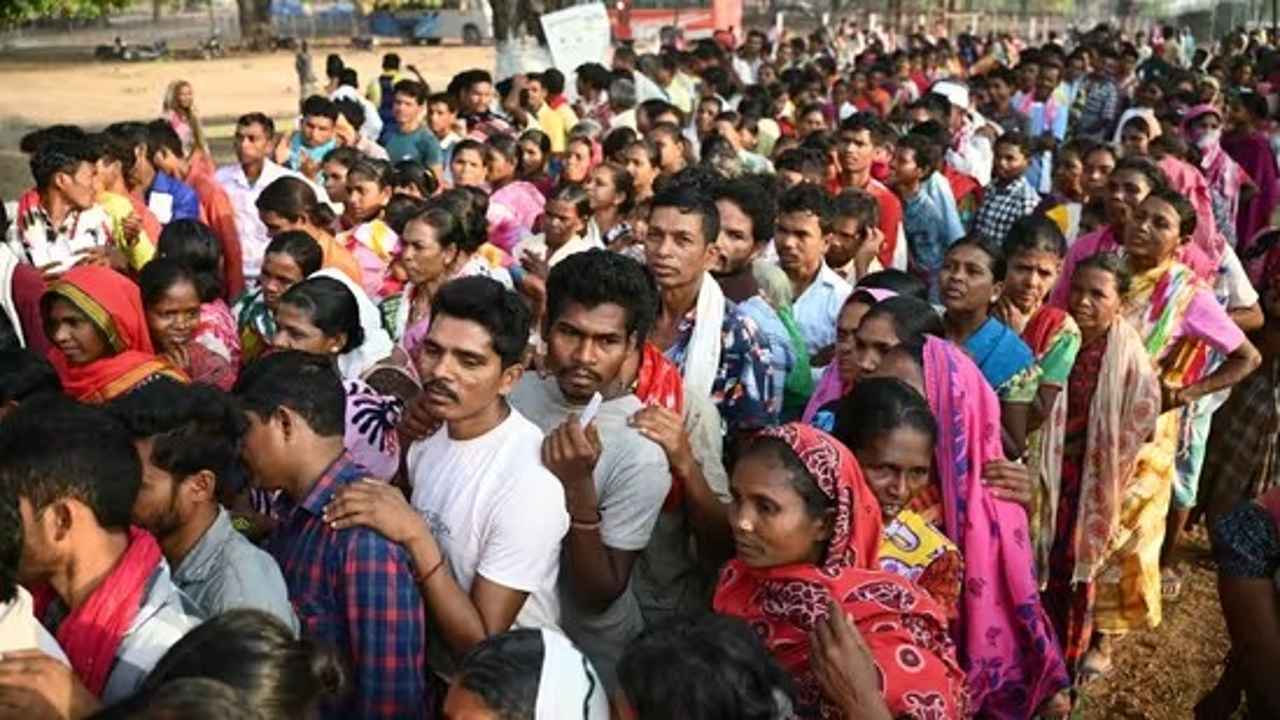
In the second phase of Lok Sabha elections 2024, over 50% of voters were registered in 13 states and the UTs till 3 p.m. 65% of voters participated in the first round of the Lok Sabha elections.
The 18th Lok Sabha elections are currently in their second phase, with voting for 88 seats taking place across 13 states and union territories. There are more than 1,200 people running for office, four of them are from outside Manipur.
Union minister Rajeev Chandrasekhar, BJP members Tejasvi Surya, Hema Malini, and Arun Govil, Rahul Gandhi and Congress leader Shashi Tharoor, DK Suresh, the brother of Karnataka Deputy Chief Minister DK Shivakumar, and former chief minister HD Kumaraswamy are among the notable contenders for the second phase.
In 2019, the NDA had won 56 of the 89 seats and the UPA 24. Six of these seats have been redrawn as part of the delimitation exercise.
The first phase of the seven stages of the elections took place on Friday, including 102 seats spread across 21 states and Union territories. Voter turnout was about 65.5% in the first phase, according to the reports.
In biggest festival of democracy, people from all walks of sector took part in it. A video went viral where former India captain and current Indian team head coach Rahul Dravid and former India player and head coach Anil Kumble were seen standing in line to cast their vote.
Meanwhile, voting started at 7 a.m. and will end at 6 p.m. The Election Commission has extended voting hours for those who are in line by an hour. According to Election Commission figures, the first two hours saw a 9.3% voter turnout throughout the 88 constituencies. By 9 am, Kerala had recorded 8.52%, Karnataka 9.21%, and Madhya Pradesh 13.82%.
In this phase, there were about 15.88 crore eligible voters, comprising 5.929 third-gender electors, 8.08 crore males, and 7.8 crore women. 3.28 crore young voters, aged 20 to 29, are among them; 34.8 lakh of them are first-time voters.
2024 Lok Sabha Elections
Lok Sabha elections 2024: 102-year-old man walks to polling booth to cast his vote in Jammu
The lowest voter turnout so far was noted in Ramgarh at 1.53%.
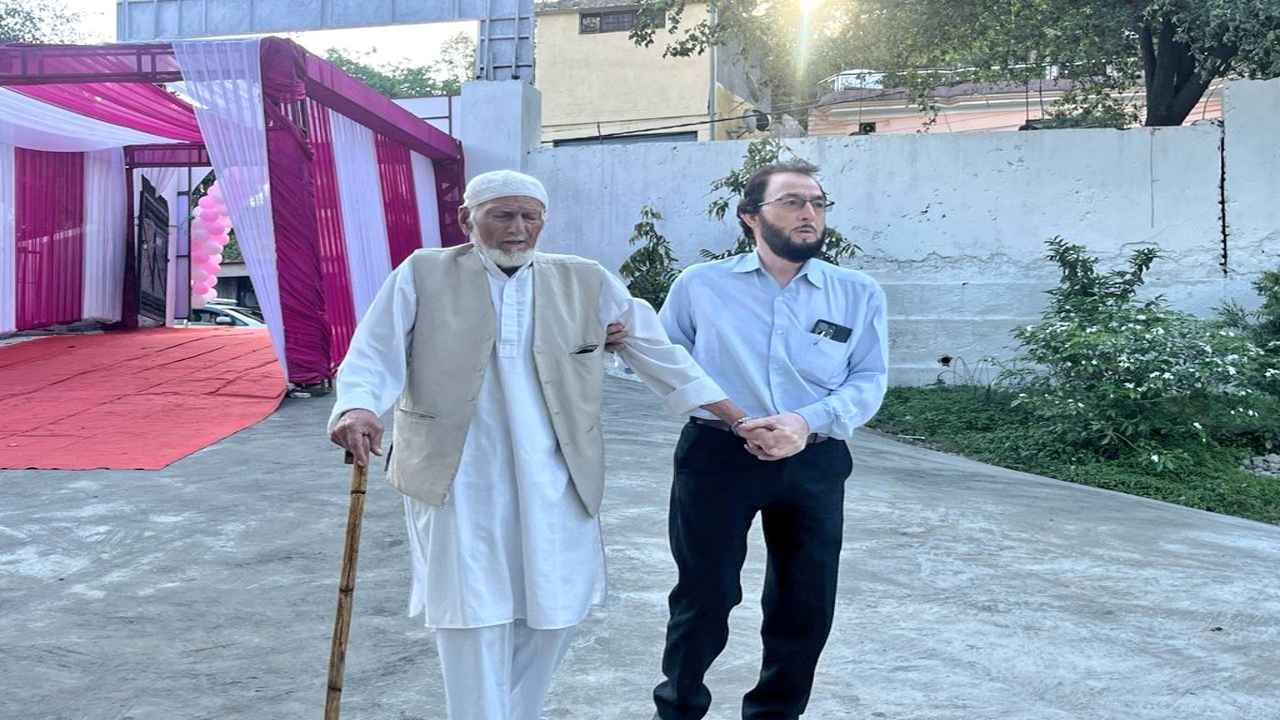
A 102-year-old man showed up at a Jammu polling place to cast his vote in the second phase of the Lok Sabha elections on Friday. Haji Karam Din arrived at the Reasi district polling place in the Jammu constituency with a walking stick in hand and a family member who assisted him with the pre-voting process.
Haji Karam Din, who is 102-year-old, showed his inked finger and posed for pictures outside the polling booth after casting his vote. He said voting at this polling place at this age makes him very happy. He has always cast his vote. Even at the age of 102, this experience is still ongoing, he said.
Reasi district is a part of the Jammu parliamentary constituency, and 22 candidates are up for vote with around 17.81 lakh eligible voters.
BJP’s sitting member Jugal Kishore Sharma is aiming for a third term in office following wins in the elections of 2014 and 2019. Former minister and Congress candidate Raman Bhalla is his main opponent.
Voting in the Jammu-Reasi Lok Sabha constituency began with eager voters showing up at the polling places. Some of them were wearing traditional Dogra attire.
In 2,416 polling places around the constituency, voting got underway at 7 a.m., and 10.39% of the total votes were cast by 9 a.m. In the 2019 Lok Sabha elections, Jammu recorded a 74% voter turnout.
Following the repeal of Article 370 and the division of the former state into two Union Territories five years ago, this is Jammu’s first significant election.
The Akhnoor segment received the highest percentage of votes, 14.24%, followed by Reasi (14.13%), Gulabgarh (13.53%), Shri Mata Vaishnodevi (12.71%), Marh (12.31%), Samba (8.56%), R S Pura Jammu South (8.17%), and Suchetgarh (5.67%), according to the officials. Ramgarh recorded the lowest voter participation of 1.53% so far.
Low attendance was observed in the border areas of the districts of Jammu and Samba till nine in the morning, according to poll data.
The officials said that big lines of voters were observed at several polling places throughout Jammu city. Voters were observed heading towards polling places early in the morning.
India News
Salman Khan house firing case: NIA interrogates arrested shooters Sagar Pal, Vicky Gupta for three hours
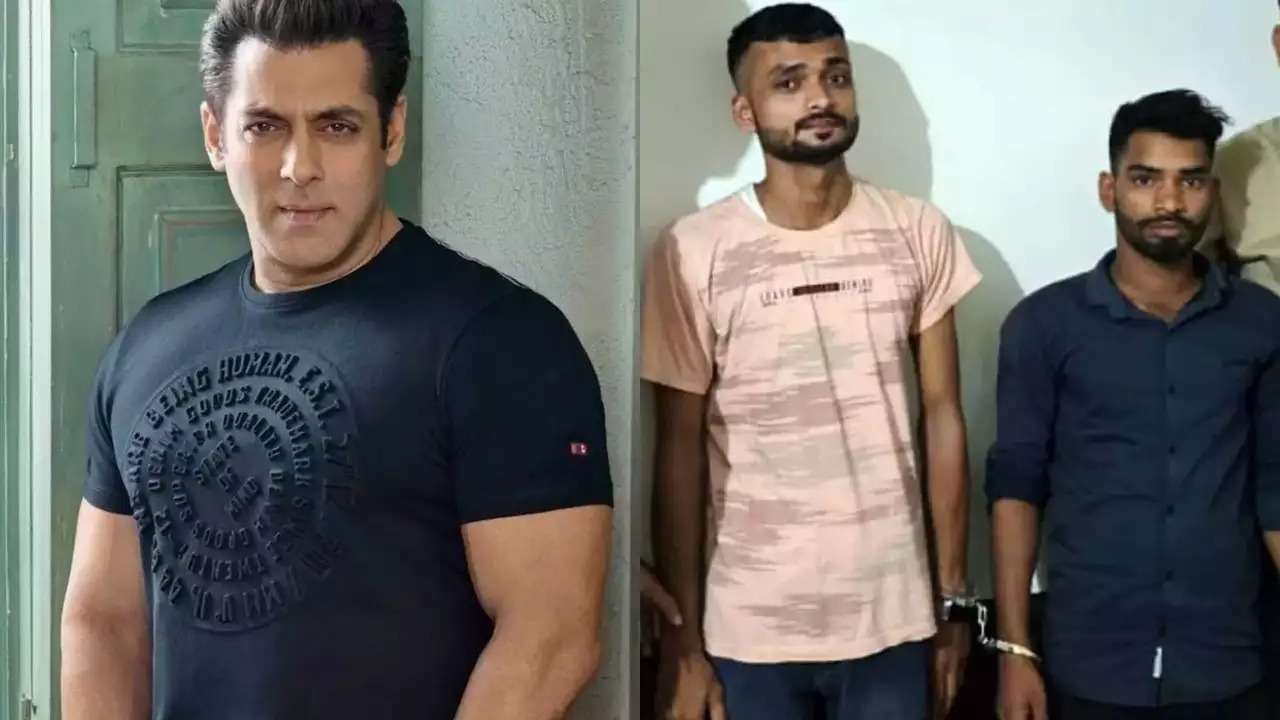
The investigation into the shocking firing incident that took place outside Salman Khan’s house on April 14 keeps bringing new updates with every passing day. In this case, Sagar Pal and Vicky Gupta, the two suspected shooters, have already been taken into custody.
The two shooters have reportedly been questioned by the National Investigation Agency (NIA), according to a new development. Every day that goes by, more information is revealed about the inquiry into the shocking firing incident that happened outside Salman Khan’s house on April 14. Sagar Pal and Vicky Gupta, the two accused shooters, are being held in custody after their first arrests.
It was recently discovered that the two shooters were questioned by the National Investigation Agency (NIA).
NIA has reportedly begun questioning Sagar Pal and Vicky Gupta, who were detained a few days ago for firing openly outside Salman Khan’s Galaxy Apartments in Mumbai, according to a recent update posted on their X (Twitter) account. NIA has interrogated shooters Vicky Gupta and Sagar Pal, arrested in the firing case, the tweet said.
According to the reports, two Punjabi residents were taken into custody by the Mumbai Crime Branch yesterday on suspicion of being involved in the recent shooting incident outside the house of Bollywood actor Salman Khan.
The two men, Sonu Subhash Chander and Anuj Thapan, provided guns to Sagar Pal and Vicky Gupta, the shooters, according to information released by the Mumbai Crime Branch. It was also reported that they had communication with the Bishnoi gang. For those who don’t know, hours after the incident, Anmol Bishnoi, the brother of gangster Lawrence Bishnoi, allegedly took credit for the firing in a Facebook post.
The shooters’ custody has been extended by Mumbai’s Esplanade Court until April 29.
Meanwhile, on the workfront Salman Khan was last seen in Tiger 3 alongside Katrina Kaif.
-

 Trending24 hours ago
Trending24 hours agoSocial media user shares video of Air India ground staff throwing expensive musical instruments, video goes viral
-
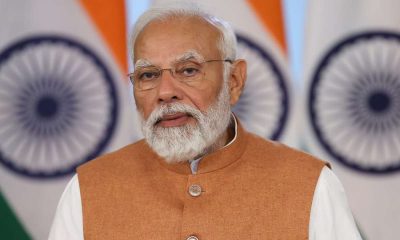
 2024 Lok Sabha Elections8 hours ago
2024 Lok Sabha Elections8 hours agoPM Modi calls for high voter turnout in second phase of Lok Sabha elections 2024, says your vote is your voice
-
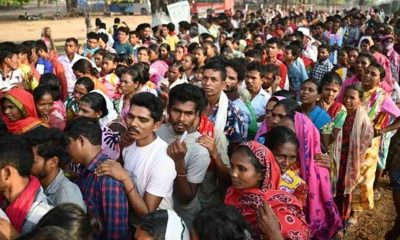
 2024 Lok Sabha Elections3 hours ago
2024 Lok Sabha Elections3 hours agoLok Sabha election 2024: Nearly 50% voter turnout recorded in second phase till 3 pm
-
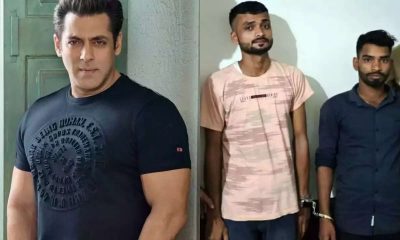
 India News7 hours ago
India News7 hours agoSalman Khan house firing case: NIA interrogates arrested shooters Sagar Pal, Vicky Gupta for three hours
-
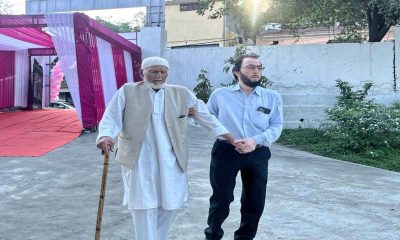
 2024 Lok Sabha Elections6 hours ago
2024 Lok Sabha Elections6 hours agoLok Sabha elections 2024: 102-year-old man walks to polling booth to cast his vote in Jammu
-
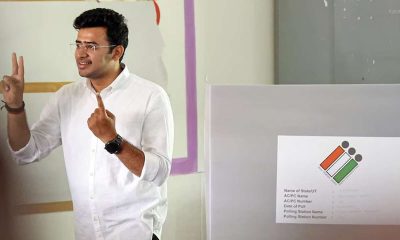
 2024 Lok Sabha Elections1 hour ago
2024 Lok Sabha Elections1 hour agoElection Commission books BJP MP Tejasvi Surya for seeking votes in the name of religion



